Every fortnight a rubbish truck goes past my house and empties my bin full of green waste. Well I found out a few months ago, when my local council organised a tour of Veolia’s Bulla Organics Facility.
Road trip time
The Bulla Organics Facility was opened in 2013 at a cost of $15 million by Veolia and is part of the ‘Eco-Hub’ operated by Hi-Quality Group outside of Sunbury, and processes 85,000 tonnes of green organics, lawn clippings, garden waste and food scraps annually; which are converted into 40,000 tonnes of compost and 20,000 tonnes of mulches.
Every day dozens of rubbish trucks from councils across Melbourne arrive at the site – such as Merri-bek.
Nillumbik.
And Melton – and unload the green waste onboard.
A front end loader then moves the piles of organic material into large piles.
Where contamination such as loose shopping bags is visible.
And plastic bags filled with who knows what.
So a mechanical screening machine is used to do the initial sorting of the incoming waste.
Fine bits come out the bottom.
And the big bits head into a sorting shed, where six workers spend their day stand beside the conveyor belt picking out anything that isn’t organic.
Dropping the rubbish down a chute into skip bins down below.
The contamination rate of incoming green waste is about 3% – so the amount of rubbish removed forms a massive pile after just a few days.
Once the waste has been screened, the wheel loader moves it into a shredder.
And then it gets moved into the composting shed.
Where there are 14 composting cells, each of 300 cubic meter capacity.
Incoming organic waste is placed in the cells and covered over, reaching a temperature of 55 degrees which is maintained for 72 hours to kill off any seeds and insects.
Seven to ten days later, the door is opened.
And inside is an immature compost.
Covered in fungus.
A wind shifter is used to remove any remaining pieces of plastic.
But unfortunately some still makes it through.
Then the material is sorted by size – the large pieces are mulch.
And the fines as compost.
Which is then stockpiled outside the shed awaiting delivery to horticultural businesses and broad acre farmers.
Fire risk and smells
Even after being removed from the composting cells, the material is still quite hot and emits steam.
So fire hose reels can be found around the site.
As well as a powerful fire pump system.
To control the odours inside the shed, a negative pressure biofiltration system has been installed.
Air being sucked out of the shed.
And pumped through a filtration bed outside.
And wheelie bins?
The biggest piece of contamination in the waste stream was something unexpected.
Wheelie bins!
Apparently having a bin fall inside the rubbish truck on collection day is a common occurrence.
So they get screened out of the incoming waste stream.
Then separated out into plastic to be recycled.
And wheels that are returned for reuse.
Further reading
The Bulla site uses a method known as “in-vessel composting”
In-vessel composting (IVC) is a group of more advanced composting systems where the process is fully contained within a vessel or building, and closely controlled to accelerate the composting process. IVC is particularly suited to more odourous waste streams such as food waste and the organic-rich fraction separated from mixed residual waste as part of mechanical biological treatment.
IVC can be an energy intensive process, predominantly for the power to provide the forced aeration. Typically, temperatures between 55ºC and 65ºC are achieved by IVC processes because the heat is contained in the vessel (any more than 65ºC is harmful to the bacteria involved). Higher sustained temperatures have the advantage of destroying potentially pathogenic organisms in the waste and can also be used to dry material if desired (bio-drying).
IVC is a more intense form of composting but is often used to partially decompose and pasteurise the waste, followed by a secondary open composting and/or maturation phase. Hence the duration of the in-vessel phase will typically be between two and four weeks. This reduces the capacity requirement of the more expensive IVC phase but also adds to the overall site footprint requirement when the open windrow phase is included.
Odours are contained and captured by ensuring vessels are sealed and air is continuously extracted to maintain the vessel under negative pressure. The extracted process air is usually treated through a biofilter. The waste is also contained from vermin and protected from weather conditions, including rainfall which might produce excessive leachate. Any leachate that does seep out during the composting process is captured and recirculated back into the compost.
The specific process used being:
Process:
• Pre work: to take out visible hazardous and large items;
• Decontamination: 6 – 8 sorters plus 2 loader operators;
• Shredding: to bring material to an even particle size;
• Composting Vessels: 14 composting vessels. 300 cubic meters each. Forced aeration in the vessels;
• The material remains in the vessel at 55C for 72 hours to kill of any seeds /bugs, then in the vessel for a further 7 to 10 days;
• 800 air holes in each floor. Air extracted from the top and feed back into the floor through the 800 holes. Constructed using retractable tarp roof and removable (by loader) front feed doors;
• Windrow for 4 to 6 weeks – prefer windrows outside. No advantage to be inside apart from odour control. Capital cost is high with under cover systems. Leachate management is an issue, and sufficient leachate ponds required;
• Screening for various sizes;
o <20 mm compost; o 20 -60 mm mulch; o > 60 mm oversize; and
• Wind shifter to remove any soft plastics.Major Markets:
• Broad acre farming; and
• Urban Soil Blends.The gate fee for Food Organics Garden Organics (FOGO) is around $85/t.
When material is transported to agricultural areas (up to 350 km) transport becomes the highest cost in the whole process.

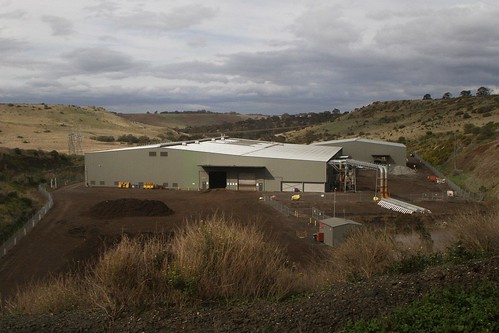
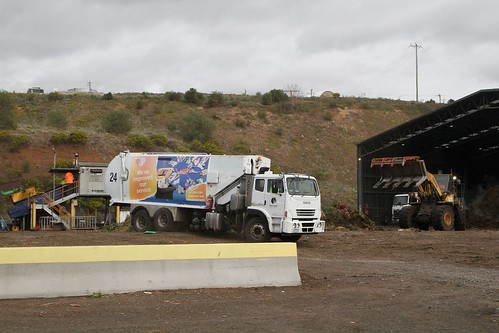
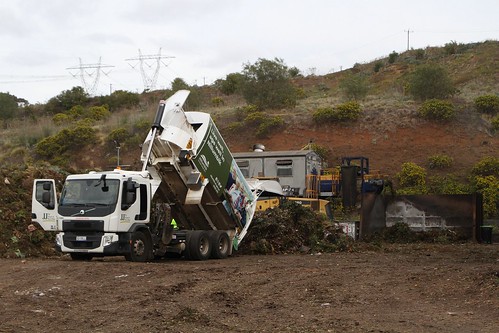
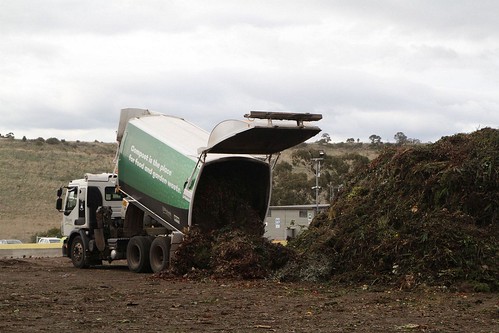
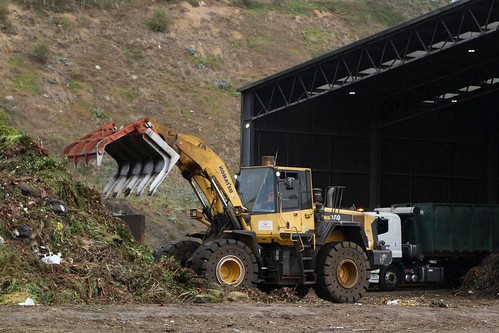
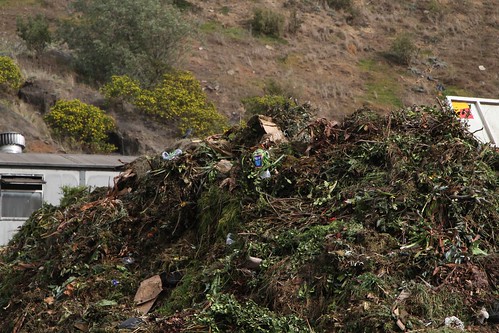
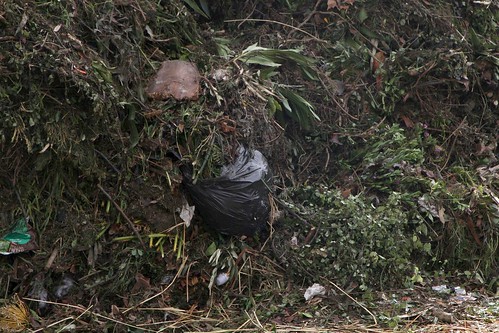
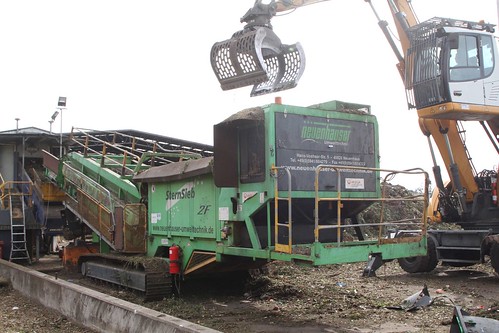
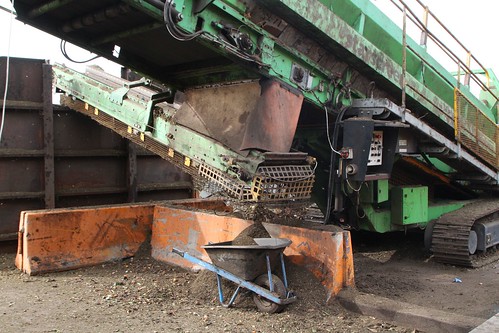
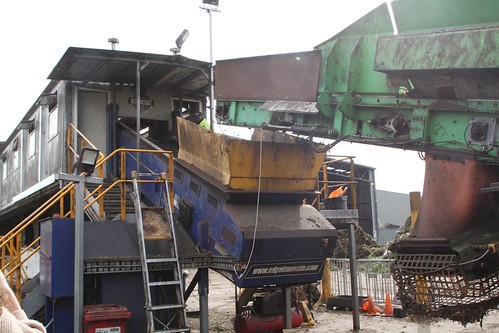
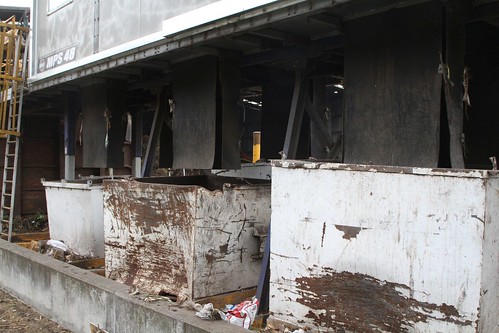
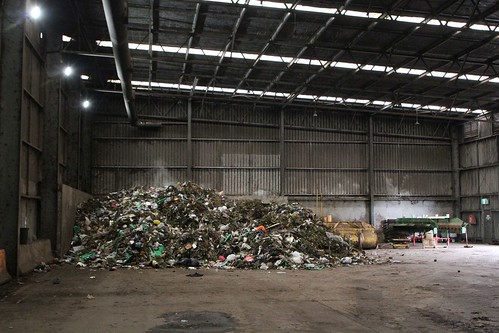
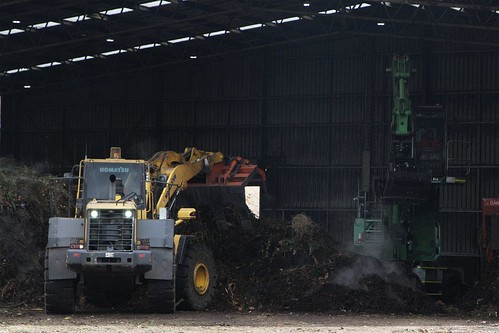
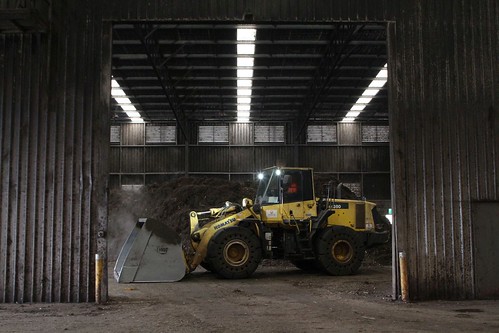
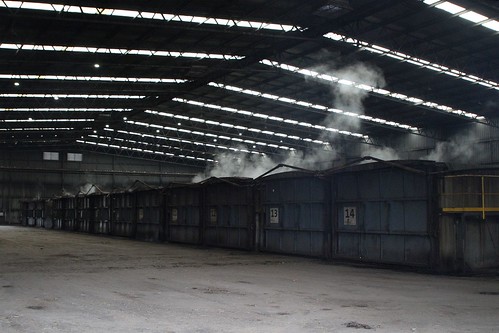
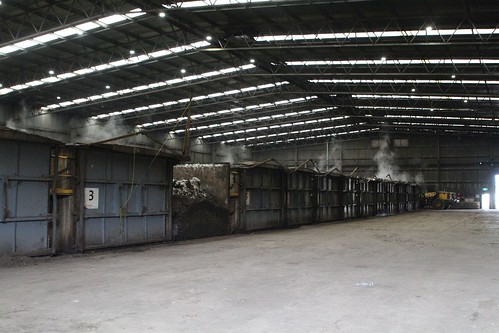
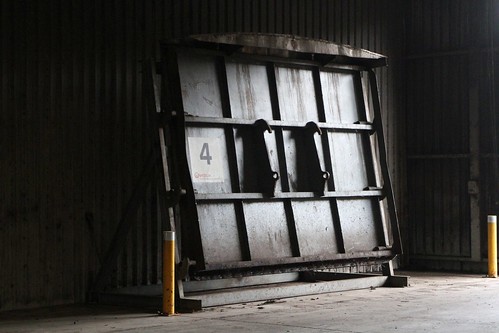
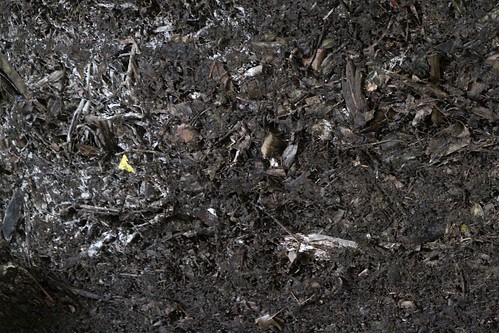
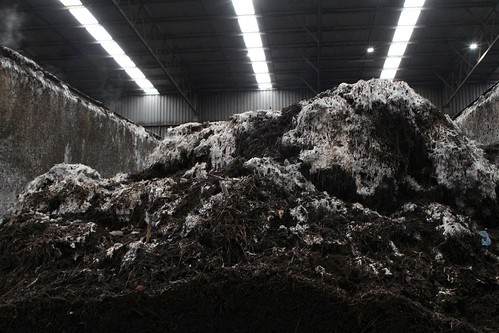
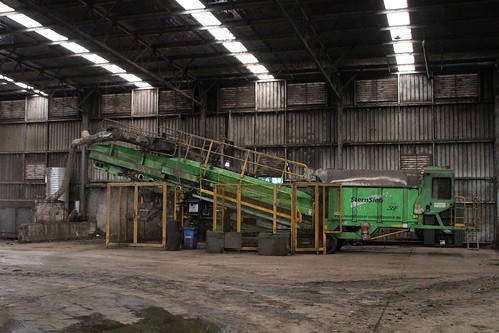
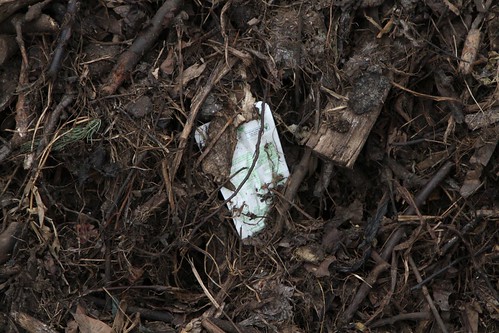
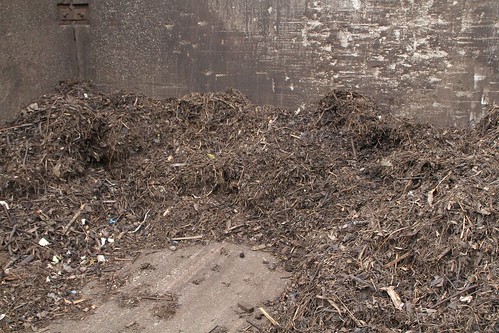
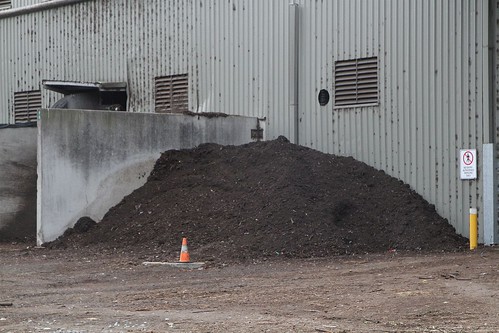
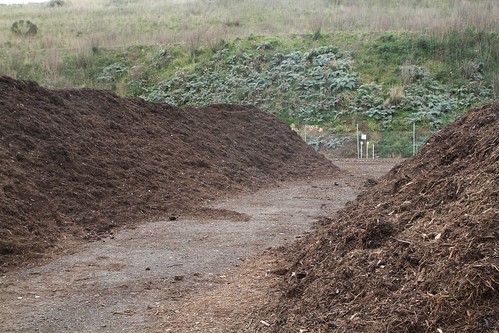
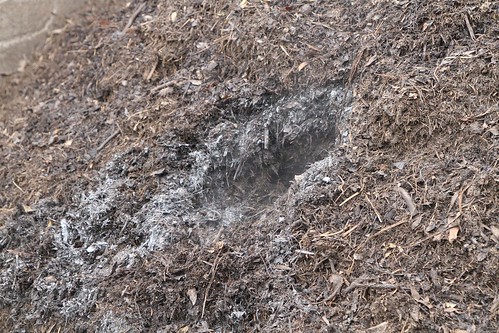
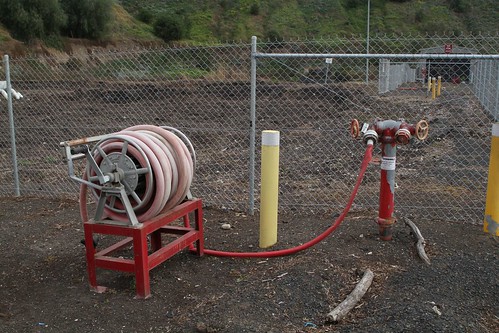
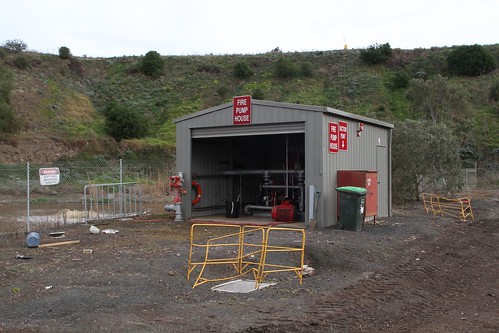
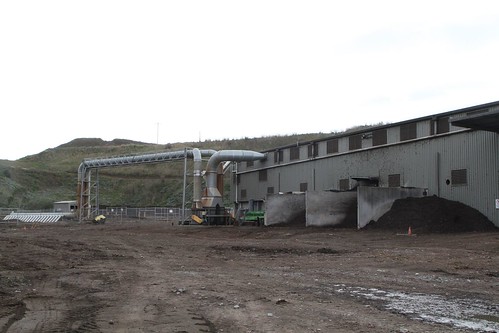
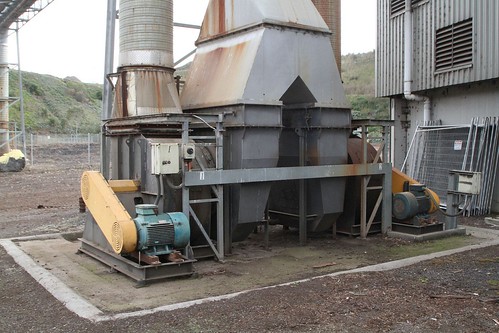
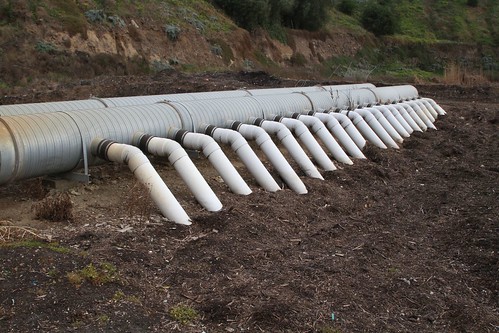
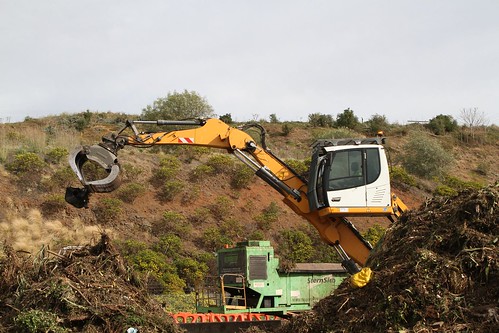
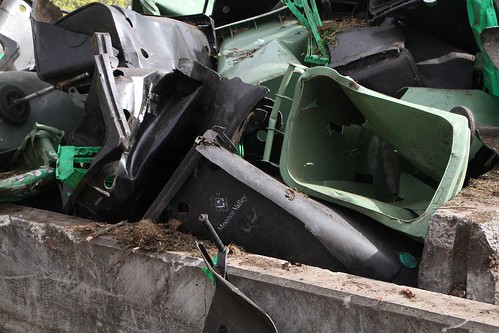
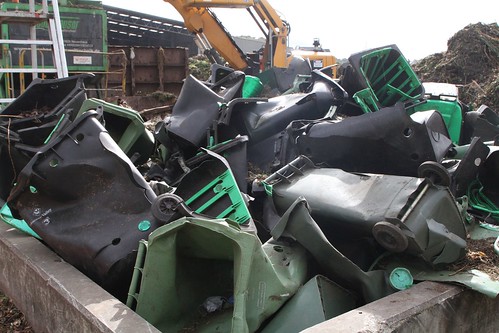
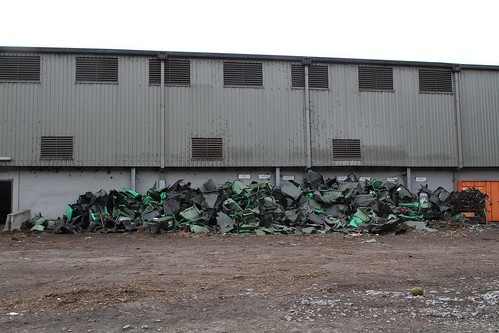
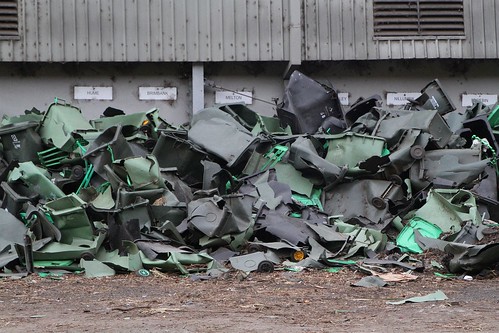
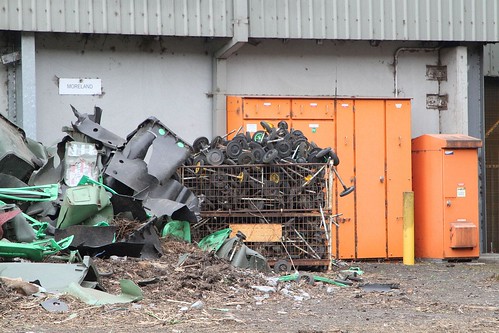

Sacyr operate a similar facility in Dandenong and there is an outdoor facility called Biomix in northern Victoria near Shepparton.
The Sacyr facility gets a mention here as well:
https://www.emrc.org.au/documents/535/5-september-2019
They can process 120,000 tonnes/year vs 85,000 tonnes/year at Bulla; and the entire process is fully enclosed.
Fascinating – thanks for taking the tour and writing it up. I’ve always wondered how our green waste gets dealt with.
Thanks – as soon as I saw the tour advertised I signed up!
interesting – having the bin yoinked into the truck was not something I’d thought of and I take back all the mean things I was thinking about my neighbours …
Wheelie bins, you were supposed to fight the waste, not join them!
Thank you for this!!! Real good info
Thanks!